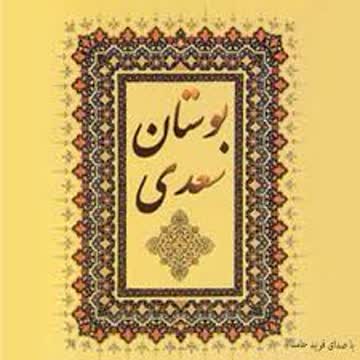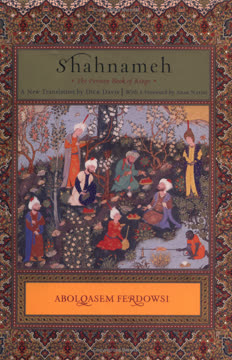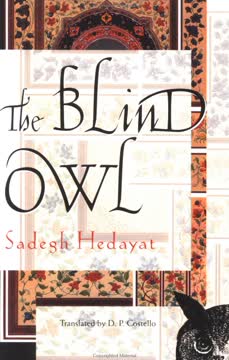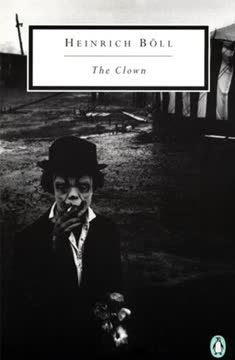Plot Summary
The King's Dilemma
In a tale of justice and mercy, a king is confronted with the decision to execute a prisoner. The prisoner, in his despair, insults the king, but a wise vizier interprets the words as a plea for mercy. The king, moved by this interpretation, spares the prisoner, illustrating the power of compassion over vengeance. This story highlights the importance of wise counsel and the impact of mercy in leadership.
The Wise Dervish
A dervish, known for his piety, encounters a king who seeks his prayers. The dervish advises the king to show mercy to his subjects to avoid the wrath of a powerful enemy. This interaction underscores the dervish's wisdom and the value of humility and justice in governance. The dervish's teachings remind us that true power lies in benevolence and fairness.
The Power of Silence
A young man, wise beyond his years, chooses silence over speech in the company of scholars, fearing the shame of ignorance. This decision reflects the understanding that silence can be more powerful than words, especially when knowledge is lacking. The story emphasizes the importance of listening and learning before speaking, a lesson in humility and self-awareness.
The Folly of Youth
A young man, driven by passion, disregards the advice of his elders and faces the consequences of his actions. His journey from folly to wisdom illustrates the challenges of youth and the importance of heeding the counsel of those with more experience. This narrative serves as a cautionary tale about the impulsiveness of youth and the value of learning from mistakes.
The Burden of Wealth
A wealthy man, despite his riches, finds himself burdened by the responsibilities and expectations that come with his fortune. His story reveals the paradox of wealth, where material abundance does not necessarily equate to happiness or fulfillment. The tale encourages a reflection on the true value of wealth and the importance of using it wisely and generously.
The Lessons of Love
A tale of unrequited love explores the depths of human emotion and the pain of longing. The protagonist's devotion to his beloved, despite the obstacles, highlights the enduring power of love and the sacrifices it demands. This story captures the essence of love's complexities and the resilience required to navigate its challenges.
The Trials of Old Age
An elderly man reflects on his life, grappling with the physical and emotional challenges of aging. His story is a meditation on the passage of time and the wisdom that comes with experience. It serves as a reminder of the inevitability of aging and the importance of cherishing each moment.
The Value of Education
A scholar emphasizes the importance of continuous learning and the pursuit of knowledge. His teachings highlight the transformative power of education and its role in shaping character and intellect. This narrative underscores the idea that education is a lifelong journey, essential for personal growth and societal progress.
The Path of Contentment
A dervish, content with his simple life, teaches that true happiness comes from within, not from material possessions. His story illustrates the virtues of contentment and the freedom that comes from letting go of worldly desires. This tale encourages a reevaluation of what it means to live a fulfilled life.
The Consequences of Greed
A tale of a miserly man who hoards his wealth, only to lose it all, serves as a warning against the dangers of greed. His story is a testament to the transient nature of material possessions and the ultimate futility of greed. It highlights the importance of generosity and the lasting impact of kindness.
The Wisdom of Patience
A story of perseverance and patience, where a man learns that true success comes from enduring hardships and waiting for the right moment. This narrative emphasizes the value of patience in achieving one's goals and the strength it takes to remain steadfast in the face of adversity.
The Enduring Legacy
The final chapter reflects on the legacy one leaves behind, emphasizing the importance of actions over words. It encourages readers to consider the impact of their lives on others and the world, highlighting the enduring nature of good deeds and the power of a positive legacy.
Characters
The King
The king is a central figure who embodies the challenges of leadership. His decisions reflect the complexities of power and the importance of wise counsel. Throughout the stories, he learns the value of compassion and the impact of his actions on his subjects.
The Wise Dervish
The dervish represents the virtues of simplicity and spiritual insight. His interactions with the king and others highlight the importance of inner peace and the power of humility in achieving true wisdom.
The Young Scholar
This character embodies the journey of learning and the pursuit of wisdom. His story emphasizes the importance of education and the humility required to acknowledge one's limitations.
The Wealthy Man
The wealthy man's story explores the paradox of wealth and the responsibilities it entails. His character serves as a reminder of the true value of generosity and the fleeting nature of material possessions.
The Lover
The lover's tale captures the essence of unrequited love and the sacrifices it demands. His character highlights the enduring power of love and the resilience required to navigate its challenges.
The Elderly Man
This character represents the passage of time and the wisdom that comes with experience. His story is a meditation on the inevitability of aging and the importance of cherishing each moment.
The Miser
The miser's downfall serves as a warning against the dangers of hoarding wealth. His character illustrates the futility of greed and the importance of generosity.
The Patient Man
This character's journey emphasizes the value of patience and the strength required to endure hardships. His story highlights the importance of waiting for the right moment to achieve success.
The Educator
The educator's teachings underscore the transformative power of education and its role in shaping character and intellect. His character represents the pursuit of knowledge as a lifelong journey.
The Content Dervish
This character embodies the virtues of contentment and the freedom that comes from letting go of worldly desires. His story encourages a reevaluation of what it means to live a fulfilled life.
Plot Devices
Moral Dilemmas
The stories often present characters with moral choices, highlighting the challenges of making ethical decisions. These dilemmas serve to illustrate the nuances of morality and the impact of one's actions on others.
Symbolism
Throughout the tales, various symbols, such as wealth, love, and age, are used to represent broader themes. These symbols help to convey the underlying messages of the stories and add layers of meaning to the narrative.
Allegory
Many of the tales function as allegories, using fictional scenarios to impart moral lessons. This device allows readers to engage with the stories on multiple levels and draw their own conclusions about the themes presented.
Foreshadowing
The narratives often include subtle hints or clues about the outcomes of certain actions, creating a sense of anticipation and tension. This device helps to build suspense and keeps readers engaged with the unfolding story.
Irony
Irony is used to emphasize the contrast between appearance and reality, often leading to surprising or thought-provoking conclusions. This device adds depth to the stories and encourages readers to question their assumptions.
Analysis
"The Gulistan" by Saadi is a collection of stories that delve into the complexities of human behavior and the moral dilemmas individuals face. Through a blend of humor, wisdom, and allegory, Saadi offers insights into the virtues of humility, patience, and contentment, while cautioning against the pitfalls of greed, pride, and folly. The tales serve as a mirror for readers to reflect on their own lives and the values they hold dear. Saadi's work remains relevant today, offering timeless lessons on the importance of compassion, integrity, and the pursuit of knowledge.
Last updated:
FAQ
Synopsis & Basic Details
What is بوستان سعدی about?
- Moral Guidance Collection: بوستان سعدی (The Gulistan) is a classical Persian literary masterpiece, a collection of didactic tales, anecdotes, and poems designed to impart moral, ethical, and practical wisdom. It serves as a "mirror for princes" and a guide for common people, covering themes from justice and contentment to love and education.
- Prose and Poetry Blend: The work is uniquely structured, alternating between elegant prose narratives and illustrative poetic verses, making complex philosophical ideas accessible and engaging. Saadi himself notes this blend, stating, "A flower endures but five or six days / But this rose garden is always delightful" (p. 15), implying the lasting nature of his literary "rose garden."
- Reflections on Human Nature: At its core, the Gulistan explores the multifaceted aspects of human nature, societal dynamics, and the pursuit of spiritual and worldly fulfillment. It delves into the consequences of actions, the value of virtues, and the pitfalls of vices, offering timeless insights into the human condition.
Why should I read بوستان سعدی?
- Timeless Wisdom & Ethics: Readers should engage with بوستان سعدی for its enduring ethical and moral lessons, which remain profoundly relevant across centuries and cultures. Saadi's insights into justice, humility, and contentment offer practical guidance for navigating life's complexities, as seen in his advice, "Do good, O man, and consider life as a good fortune" (p. 24).
- Literary Craftsmanship & Beauty: The book is a masterclass in Persian literary style, celebrated for its eloquent prose, poignant poetry, and the seamless integration of both forms. Its beauty and clarity have made it a foundational text for learning Persian, offering a rich aesthetic experience alongside its didactic content.
- Cultural & Historical Insight: Reading the Gulistan provides a window into 13th-century Persian society, its values, and the intellectual landscape shaped by events like the Mongol invasions. Saadi's personal experiences and observations, though sometimes fictionalized, offer a vivid portrayal of the era's challenges and aspirations, enriching understanding of Islamic and Persian heritage.
What is the background of بوستان سعدی?
- Post-Mongol Era Context: Composed in 1258 CE, the Gulistan emerged during a turbulent period following the devastating Mongol invasions, which profoundly impacted the Muslim world. Saadi's return to his spared hometown of Shiraz (p. xv) after years of travel provided a unique perspective, allowing him to reflect on societal resilience and moral decay amidst chaos.
- Saadi's Extensive Travels: The author, Sheikh Muslih-uddin Sa'di Shirazi, spent decades traveling across North Africa, Arabia, Central Asia, and India, often in the company of Sufi dervishes (p. xv). These journeys exposed him to diverse cultures, philosophies, and human experiences, which he distilled into the universal lessons found in the Gulistan.
- "Mirror for Princes" Tradition: The Gulistan belongs to the "mirror for princes" genre, intended to provide practical and corrective moral and ethical guidance for rulers and their benefactors. Saadi's didactic style, characterized by "open and friendly style and simple, though not simplistic, diction" (p. xvi), aimed to make these profound lessons palatable and memorable for a wide audience.
What are the most memorable quotes in بوستان سعدی?
- "A falsehood resulting in conciliation is better than a truth producing trouble." (Story 1, The Manners of Kings, p. 23): This quote, uttered by a wise vezier, encapsulates a pragmatic ethical stance, prioritizing harmony and peace over rigid adherence to truth when the latter causes discord. It highlights the nuanced moral dilemmas Saadi explores, where intent and outcome often outweigh strict rules.
- "If you have no sympathy for the troubles of others / You are unworthy to be called by the name of a man." (Story 10, The Manners of Kings, p. 36): This powerful declaration emphasizes the core human virtue of empathy and interconnectedness, asserting that true humanity lies in compassion for fellow beings. It reflects the Sufi-influenced theme of universal brotherhood and shared suffering.
- "The eye of greediness, the wealthy of the world / Can no more fill than dew can replenish a well." (Story 20, The Effects of Education, p. 190): This vivid metaphor succinctly captures the insatiable nature of greed, a recurring theme in the Gulistan. It underscores the futility of endless accumulation and the ultimate emptiness of material pursuits, advocating for contentment and generosity.
What writing style, narrative choices, and literary techniques does Saadi use?
- Alternating Prose and Verse: Saadi masterfully interweaves prose narratives with poetic verses, creating a dynamic and engaging reading experience. This technique, as he explains, ensures the reader's mind "should not be fatigued, and thereby excluded from the benefit of acceptance" (p. 227), making the didactic content more palatable and memorable.
- Didactic Fables and Parables: The Gulistan is replete with short, illustrative stories, fables, and parables drawn from diverse sources, including personal anecdotes, historical accounts, and folk wisdom. These narratives serve as allegories, simplifying complex moral and philosophical concepts for easier comprehension and application, often featuring kings, dervishes, and common folk.
- Direct Address and Rhetorical Questions: Saadi frequently employs direct address ("O you," "O brother") and rhetorical questions to engage the reader personally, inviting reflection and self-examination. This conversational tone fosters a sense of intimacy and urgency, making the moral lessons feel directly relevant to the reader's life, as seen in "O you, whose fifty years have elapsed in sleep, / Will you perhaps overtake them in these five days?" (p. 11).
Hidden Details & Subtle Connections
What are some minor details that add significant meaning?
- The "Sweet-Smelling Piece of Clay" Allegory: In the Panegyric, Saadi recounts a piece of clay that became fragrant through association with a rose (p. 7). This seemingly simple anecdote subtly explains Saadi's own elevated reputation, attributing it not to his inherent virtue but to his association with the benevolent king, highlighting the theme of influence and the power of good company.
- The Fox's Fear of Being a Camel: In Story 16 of "The Manners of Kings," a fox flees, fearing he might be mistaken for a camel and pressed into service (p. 42). This minor detail, initially humorous, underscores the pervasive fear of false accusation and the arbitrary nature of power, foreshadowing the dervish's later unjust imprisonment due to envy.
- The Cypress as a Symbol of Freedom: Maxim 81 in "Rules for Conduct in Life" describes the cypress as the only "free" tree because it bears no fruit and is "fresh at all times" (p. 226). This subtle detail symbolizes spiritual liberation from worldly attachments and the cycles of gain and loss, suggesting true freedom lies in detachment and constancy, a core Sufi ideal.
What are some subtle foreshadowing and callbacks?
- The King's Initial Mercy Foreshadows Later Downfall: In Story 1 of "The Manners of Kings," the king's decision to spare a prisoner based on a vezier's compassionate lie (p. 23) subtly foreshadows later stories where a lack of mercy or rejection of wise counsel leads to ruin, such as the tyrannical king losing his kingdom in Story 6 (p. 32). This establishes a recurring moral principle early on.
- The "Bad Foundation" Callback: The king's cynical remark, "He whose foundation is bad will not take instruction from the good" (Story 4, The Manners of Kings, p. 28), is a callback to the inherent nature versus nurture debate. This idea is tragically proven when the educated robber youth reverts to his old ways, suggesting a deep-seated, almost predestined, inclination towards one's original character, despite external efforts.
- The "Fire" Motif as Divine Retribution: The recurring imagery of "fire" (e.g., "Fire burning with wild rue will not / Cause a smoke like that of afflicted hearts" p. 48; "fire from the kitchen fell into the store of his wood" p. 54) subtly foreshadows divine retribution for oppression. The tyrant's house burning down in Story 26 of "The Manners of Kings" is a direct consequence of the "smoke of the hearts of dervishes," illustrating that injustice, even if unpunished by man, incurs heavenly wrath.
What are some unexpected character connections?
- The Tyrannical King and the Naked Dervish: In Story 13 of "The Manners of Kings," a drunken king boasts of his carefree state, only to be echoed by a naked dervish who declares, "if you care not, we also do not care" (p. 37). This unexpected parallel connects two seemingly opposite figures through their shared detachment from worldly concerns, albeit from vastly different positions of power and poverty, highlighting a common human desire for freedom from care.
- The Parrot and the Crow's Shared Misery: Story 13 of "Love and Youth" depicts a parrot and a crow, both distressed by each other's presence, each believing the other to be the source of their misfortune (p. 147). This unexpected mirroring of their internal states, despite their external differences, subtly connects them through shared human-like prejudice and self-centered perception, revealing that even antagonists can share a common, if unacknowledged, emotional experience.
- The Qazi and the Farrier-Boy's Subverted Roles: In Story 20 of "Love and Youth," a respected qazi (judge) falls passionately for a farrier-boy, who then insults and physically assaults him (p. 155). This unexpected reversal of power and decorum connects the high-ranking official and the common laborer through the universal, often irrational, force of love and desire, demonstrating how passion can dismantle social hierarchies and expose human vulnerability.
Who are the most significant supporting characters?
- The Wise Vezier (Story 1, The Manners of Kings): This vezier, who skillfully reinterprets a prisoner's insults as a plea for mercy, is crucial for introducing the theme of compassionate leadership and the power of wise counsel (p. 23). His actions set a moral precedent for the king, demonstrating that true statesmanship involves empathy and strategic benevolence, influencing the king's decision-making throughout the collection.
- Loqman the Philosopher (Story 19, The Morals of Dervishes): Loqman, a figure of profound wisdom, appears in several anecdotes, offering concise and impactful advice. His refusal to speak "one word of wisdom" to robbers (p. 78) highlights the futility of teaching those unwilling to learn, serving as a recurring voice of practical discernment and a moral compass for the reader.
- The Friend Who Prompts Saadi's Writing (The Cause for Composing): This unnamed friend acts as the catalyst for the entire Gulistan, drawing Saadi out of his self-imposed silence and inspiring him to compose a lasting "Rose Garden" (p. 15). His role underscores the importance of companionship and external encouragement in creative and spiritual endeavors, making him a pivotal, though indirect, character in the book'
Review Summary
Bustan is highly regarded as a masterpiece of Persian literature. Readers praise Saadi's concise storytelling, wise aphorisms, and profound moral insights. The book explores themes like justice, humility, and contentment through poetic fables and anecdotes. While some find certain passages outdated or controversial, most appreciate Saadi's eloquent language and timeless wisdom. Many consider Bustan a valuable source of ethical guidance and cultural knowledge, though some struggle with its classical style and religious references.
Similar Books
Download PDF
Download EPUB
.epub digital book format is ideal for reading ebooks on phones, tablets, and e-readers.








